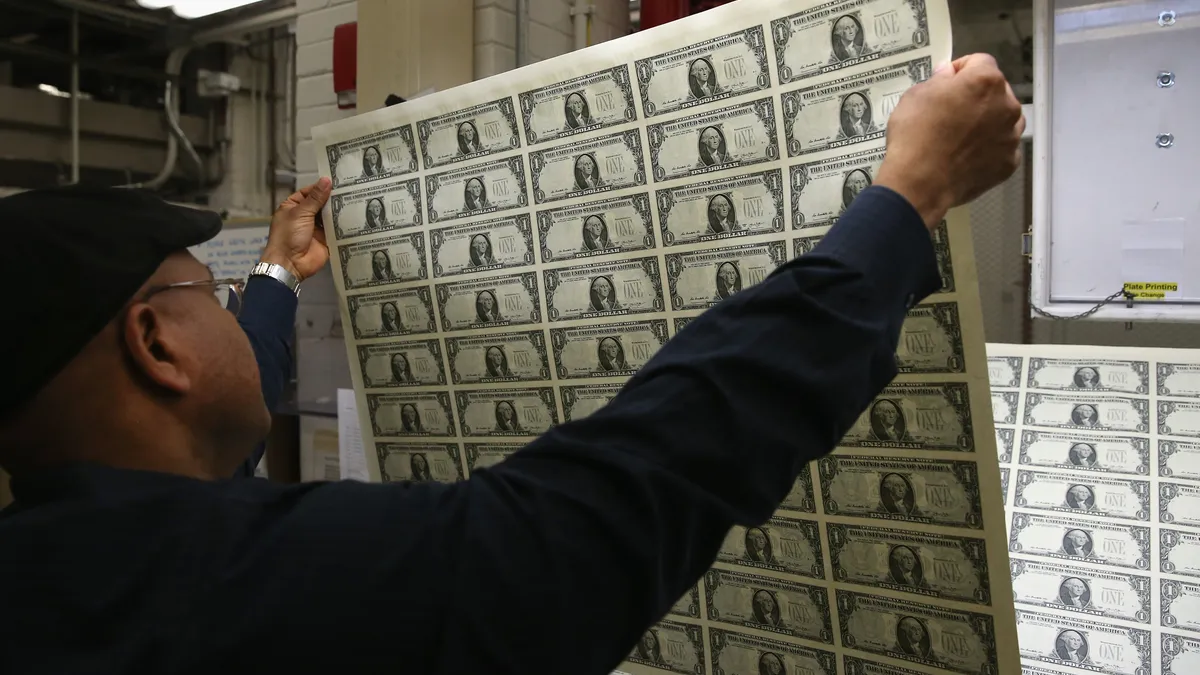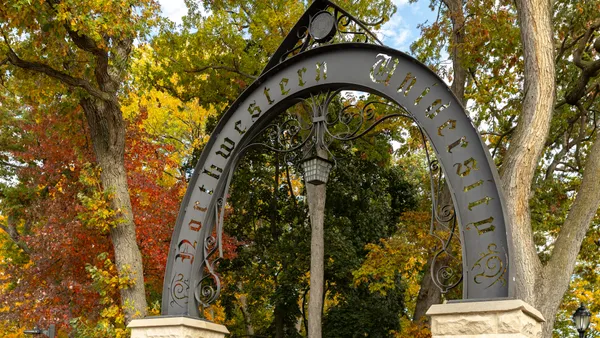Dive Brief:
- The median college received $13.2 million in government relief funding over the course of the pandemic, according to a report from S&P Global Ratings that explores just how significantly public money buoyed higher ed institutions.
- Emergency government funding accounted for over 4% of adjusted operating revenue at more than 30% of colleges in fiscal 2021, S&P found. The figures cover a majority of the 448 institutions whose debt S&P rates.
- While almost all colleges received public relief money, it was more important for those with low bond ratings — the colleges under the most financial pressure. That's notable because the bulk of the funding is now ending, increasing colleges' exposure to market stresses like inflation and declining enrollment.
Dive Insight:
S&P had given the nonprofit higher ed sector negative outlooks for four straight years before raising its view to stable in 2022, in part because of federal relief funding.
Three federal coronavirus relief bills provided higher ed with a total of about $75 billion. Much of the money had to be routed to students, but colleges received almost $40 billion in institutional funds.
Certain groups of institutions received more money than others. Historically Black colleges and universities got an additional $3 billion on top of the money set aside for all institutions, and minority-serving institutions received an extra $1 billion.
Among colleges whose debt S&P rates, the Coronavirus Aid, Relief, and Economic Security Act provided a median $2 million per institution, the Coronavirus Response and Relief Supplemental Appropriations Act was worth $4 million, and the American Rescue Plan provided $5 million.
But colleges also received other government pandemic relief funding.
Almost two-thirds of institutions S&P rates, 63%, got additional pandemic-related funding from local or state governments. The median amount they received was $2.3 million. In many cases that money flowed because state budgets were strong due to the federal relief spending, said Sean Wiley, an associate director at S&P, who wrote the report.
Also, 17% of colleges that S&P evaluates received loans under the Paycheck Protection Program, in which the federal government made forgivable loans to help employers retain workers. Their median loan totaled $3.6 million.
The loans helped institutions retain staff and address liquidity concerns, the report said. They have overwhelmingly been forgiven.
Colleges could not receive Paycheck Protection Program loans if they had more than 500 workers. Many of the institutions whose debt S&P rates have far more employees. That means the percentage of all higher ed institutions that received loans under the program is likely higher than the percentage shown in the S&P report, said Jessica Wood, senior director at S&P.
Federal coronavirus relief funding made up a larger chunk of operating budgets for colleges with lower bond ratings from S&P than it did for higher-rated institutions.
"Those ones that did receive a lot in many cases were the ones that needed it the most," Wiley said. "It helped balance the sector operationally."
Institutions that lost less auxiliary revenue than their peers also tended to benefit the most from emergency funding — a finding that might seem paradoxical at first. But auxiliary revenue is often tied to residential enrollment because much of it comes from dormitories.
Colleges that were able to fill more beds or avoid refunding money after sending students home didn't lose as much auxiliary revenue. But they still received federal relief funding, the S&P report said.
Some institutions don't operate student housing, Wood said. She recalled speaking with leaders at a college in early 2021 and discovering their operating budget was improving.
"It was because they didn't have any housing," Wood said. "They didn't have any refunds, and then they didn't have a loss on auxiliary. They had other losses like tuition revenue, but they had perhaps more financial flexibility in using those emergency funds."
Higher-rated colleges that didn't receive a major boost from the relief funding still tended to weather the pandemic well and didn't have trouble meeting enrollment targets, S&P found. Now, many are in a stronger financial position than they were previously because investment returns were high and they're strong fundraisers.
Looking forward, S&P expects almost all of the government coronavirus funding to be gone in the 2023 fiscal year, which starts in July for most colleges. The source of revenue is going away at a time of increasing costs. Rising inflation means colleges will likely have to spend more to employ strong faculty and to complete capital projects.
Those with the market power to raise tuition are likely to be able to manage through the pressures, S&P said. Those with less financial flexibility, which are often institutions operating regionally and those facing projected declines in their prospective student numbers, are more likely to be exposed, according to Wiley.
"There are going to be some challenges in how schools adapt to not having those funds," Wiley said. "Prior to the pandemic, there were a lot of challenges for those schools. I think going forward, when a lot of these funds are not available to them, they are likely to have those same challenges."














